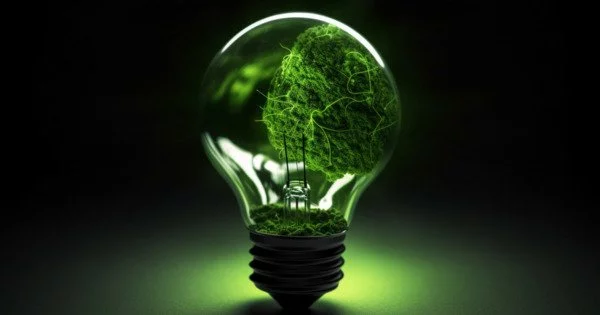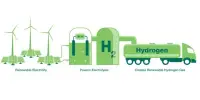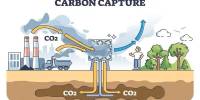Green plants, algae, and some bacteria use photosynthesis to convert sunlight, carbon dioxide, and water into glucose (a sugar) and oxygen. It is a fundamental process that supports life on Earth and forms the foundation of the food chain. Although photosynthesis is extremely efficient, its direct application for large-scale clean energy production has proven difficult.
A groundbreaking project is underway to mimic the natural process of photosynthesis by using bacteria to deliver electrons to a nanocrystal semiconductor photocatalyst. The system has the potential to replace current approaches that derive hydrogen from fossil fuels by leveraging the unique properties of microorganisms and nanomaterials, revolutionizing the way hydrogen fuel is produced and unlocking a powerful source of renewable energy.
As the world’s demand for clean, sustainable energy sources grows, scientists are looking to the power of photosynthesis for inspiration. A team of researchers at the University of Rochester is embarking on a groundbreaking project to mimic the natural process of photosynthesis using bacteria to deliver electrons to a nanocrystal semiconductor photocatalyst in order to develop new, environmentally friendly techniques for producing clean-burning hydrogen fuel.
In a paper published in the journal PNAS, Kara Bren, the Richard S. Eisenberg Professor in Chemistry at Rochester, and Todd Krauss, a professor of chemistry, demonstrate that thebacteria Shewanella oneidensisoffer an effectively free, yet efficient, way to provide electrons to their artificial photosynthesis system. By leveraging the unique properties of these microorganisms along with nanomaterials, the system has the potential to replace current approaches that derive hydrogen from fossil fuels, revolutionizing the way hydrogen fuel is produced and unlocking a powerful source of renewable energy.
“Hydrogen is definitely a fuel of high interest for the DOE right now,” Bren says. “If we can figure out a way to efficiently extract hydrogen from water, this could lead to an incredible amount of growth in clean energy.”
The way hydrogen fuel is produced now effectively makes it a fossil fuel. We want to get hydrogen from water in a light-driven reaction so we have a truly clean fuel and do so in a way that we don’t use fossil fuels in the process.
Kara Bren
‘An ideal fuel’
Bren describes hydrogen as “an ideal fuel” because it is environmentally friendly and a carbon-free alternative to fossil fuels.
The most abundant element in the universe, hydrogen, can be produced from a variety of sources, including water, natural gas, and biomass. Unlike fossil fuels, which emit greenhouse gases and other pollutants, the only byproduct of hydrogen combustion is water vapor. Hydrogen fuel is also high in energy density, which means it has a lot of energy per unit of weight. It has a wide range of applications, including fuel cells, and can be manufactured on both small and large scales, making it suitable for everything from home use to industrial manufacturing.
The challenges of using hydrogen
Despite its abundance, almost no pure hydrogen exists on Earth; it is almost always bound to other elements, such as carbon or oxygen, in compounds such as hydrocarbons and water. Hydrogen must be extracted from these compounds before it can be used as a fuel source.
Historically, scientists extracted hydrogen from either fossil fuels or, more recently, water. There is a strong push to use artificial photosynthesis to achieve the latter. Plants absorb sunlight during natural photosynthesis and use it to power chemical reactions that convert carbon dioxide and water into glucose and oxygen. Essentially, light energy is converted into chemical energy, which powers the organism.

Similarly, artificial photosynthesis is the conversion of a plentiful feedstock and sunlight into a chemical fuel. Systems that mimic photosynthesis require three components: a light absorber, a catalyst for producing fuel, and an electron source. These systems are usually submerged in water, and the light absorber is powered by a light source. The energy enables the catalyst to combine the electrons supplied with protons from the surrounding water to produce hydrogen gas.
However, most current systems rely on fossil fuels during the manufacturing process or lack an efficient way to transfer electrons.
“The way hydrogen fuel is produced now effectively makes it a fossil fuel,” Bren says. “We want to get hydrogen from water in a light-driven reaction so we have a truly clean fuel — and do so in a way that we don’t use fossil fuels in the process.”
Rochester’s unique system
Krauss’s group and Bren’s group have been working for about a decade to develop an efficient system that employs artificial photosynthesis and utilizes semiconductor nanocrystals for light absorbers and catalysts.
One challenge the researchers faced was figuring out a source of electrons and efficiently transferring the electrons from the electron donor to the nanocrystals. Other systems have used ascorbic acid, commonly known as vitamin C, to deliver electrons back to the system. While vitamin C might seem inexpensive, “you need a source of electrons that is almost free or the system becomes too expensive,” Krauss says.
Krauss and Bren’s paper describes an unlikely electron donor: bacteria. They discovered that Shewanella oneidensis, bacteria originally collected from Lake Oneida in upstate New York, provides an effective free, yet efficient, way to provide electrons to their system.
Other labs have combined nanostructures and bacteria, but “all of those efforts are taking electrons from the nanocrystals and putting them into the bacteria, then using the bacterial machinery to prepare fuels,” according to Bren. “As far as we know, ours is the first case to go the opposite way and use bacteria as an electron source for a nanocrystal catalyst.”
A fuel of the future
Bren envisions a future in which individual homes could have vats and underground tanks that harness the power of the sun to produce and store small batches of hydrogen, allowing people to power their homes and cars with cheap, clean-burning fuel. Bren points out that there are currently hydrogen-powered trains, buses, and cars, but almost all of the hydrogen available to power these systems comes from fossil fuels.
“The technology is there,” she says, “but it’s not really helping the environment until the hydrogen comes from water in a light-driven reaction – without using fossil fuels.”















